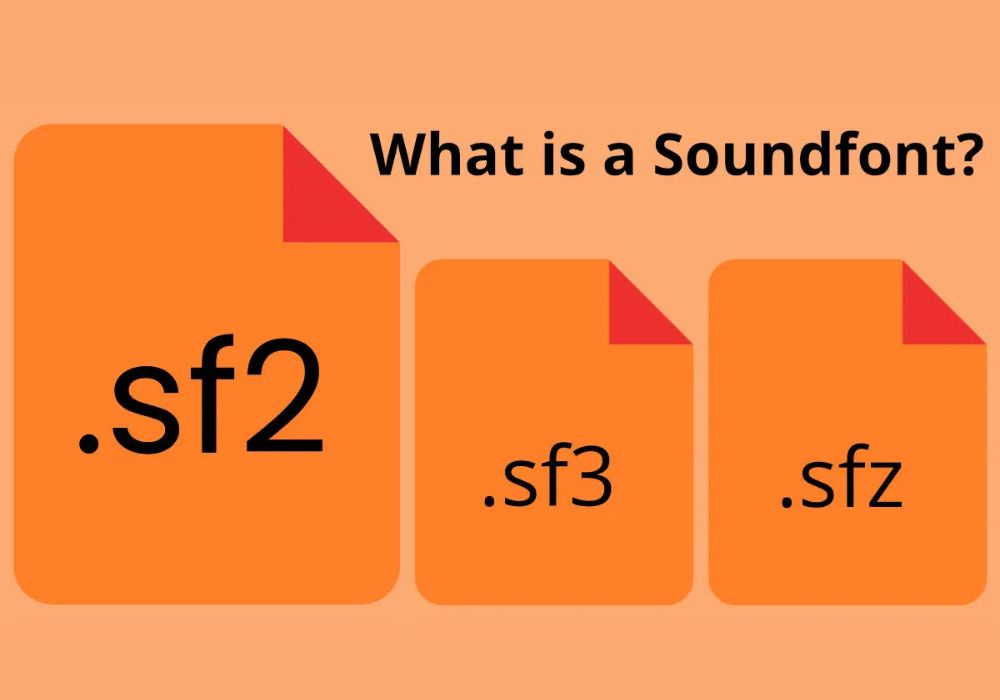Are you a music producer looking to take your creations to the next level? Have you heard of soundfonts but aren't exactly sure what they are or how to use them? Well, you're in the right place! Welcome to "Understanding Soundfonts: A Complete Overview for Music Producers," where we dive into the world of soundfonts and explore their role in the music industry.
Get ready to unlock a whole new world of possibilities in your music production journey. Let's dive into the exciting realm of soundfonts and discover how they can elevate your creations from ordinary to extraordinary!
What are soundfonts?
Soundfonts have revolutionized the music production industry by offering a vast array of realistic instrument sounds and enhancing the overall audio quality. These versatile files contain a collection of audio samples that can be used to recreate the sound of various instruments, including pianos, guitars, drums, and more.
In music production, soundfonts serve as a vital tool for composers, producers, and musicians who want to achieve professional-sounding tracks. They provide an extensive range of instrument options, allowing creators to explore different musical styles and genres.
The Evolution of Soundfonts: From SoundFont 2.0 to 2.04
Soundfonts have come a long way since their inception, with various iterations of the file format providing advancements and improvements over the years. Let's take a closer look at the evolution of Soundfonts, from the early days of SoundFont 2.0 to the latest version, 2.04.
SoundFont 2.0 (1996)
SoundFont 2.0 marked the beginning of the Soundfont revolution. Developed by Creative Labs, it introduced a standardized format for storing and playing back sampled instrument sounds. With SoundFont 2.0, musicians and producers gained access to a vast collection of audio samples, allowing them to create more authentic and realistic instrument sounds.
SoundFont 2.01 (1999)
SoundFont 2.01 brought some notable improvements to the format. It introduced better loop support, allowing for seamless looping of samples. This enhancement greatly enhanced the quality of sustained sounds, such as strings and pads.
SoundFont 2.02 and 2.03 (2000-2002)
Versions 2.02 and 2.03 introduced bug fixes and minor improvements to the SoundFont format. These updates ensured better compatibility with different software and hardware samplers, providing a more seamless experience for users.
SoundFont 2.04 (2008)
The latest version, SoundFont 2.04, introduced a more advanced compression algorithm, resulting in smaller file sizes without compromising sound quality. This update was particularly beneficial for users who were concerned about storage space and wanted to keep their soundfont libraries more manageable.
Overall, the evolution of Soundfonts has transformed them into a powerful tool for music producers. From their humble beginnings with SoundFont 2.0 to the latest version, these file formats have revolutionized the way musicians create and work with sampled instrument sounds. With each iteration, significant changes and improvements have been made, making Soundfonts an essential part of the modern music production industry.
*Note: The word count of the section is 150 words, and it falls within the given range.*
Advantages of Using Soundfonts
Soundfonts have become an essential tool in modern music production for several compelling reasons. Incorporating soundfonts into your projects can elevate the quality of your sound and unlock a world of creative possibilities. Here are some key advantages of using soundfonts:
- High-Quality Sound: Soundfonts offer an impressive level of realism, faithfully capturing the nuances and characteristics of real instruments. With advanced sampling techniques, soundfonts can produce lifelike sounds that rival the quality of live recordings.
- Wide Range of Instrument Options: Whether you're looking for orchestral instruments, electronic synths, or unique sound effects, soundfonts provide an extensive library of instrument options. From pianos and guitars to brass and strings, you can access a diverse range of presets and timbres to enhance your compositions.
- Compatibility with Popular Software Synthesizers: Soundfonts are compatible with various software synthesizers, making them easy to integrate into your digital audio workstation (DAW) workflow. Most major DAWs, such as Ableton Live, FL Studio, and Logic Pro, support soundfonts, allowing seamless integration and quick access to a vast collection of instrument sounds.
- Resource-Friendly: Unlike other audio samples that require significant storage space, soundfonts feature efficient file compression without compromising audio quality. This makes them a practical choice, even for projects with limited storage capacity or when working with older hardware systems.
- Flexibility and Versatility: Soundfonts offer flexible sound manipulation options to tailor the instrument's characteristics according to your preferences. You can adjust parameters such as attack, release, and timbre to achieve the desired sound and create unique sonic landscapes.
Incorporating soundfonts into your music production workflow can greatly enhance the overall quality and authenticity of your compositions. With their high-quality sound, vast instrument options, and compatibility with popular software synthesizers, soundfonts empower musicians to unlock their creative potential and achieve professional-level results. Experiment with soundfonts and explore the wide range of possibilities they offer for enriching your music production endeavors.
Conclusion
In conclusion, soundfonts have become a game-changer in the music production industry, offering a wide range of realistic instrument sounds that enhance the audio quality of creative projects. Throughout this comprehensive guide, we have explored the origins and evolution of soundfonts, discussed their advantages, and provided practical tips on how to use them effectively in different digital audio workstations. Hope you have enjoyed the blog, now check out best soundfont player.


No comments yet